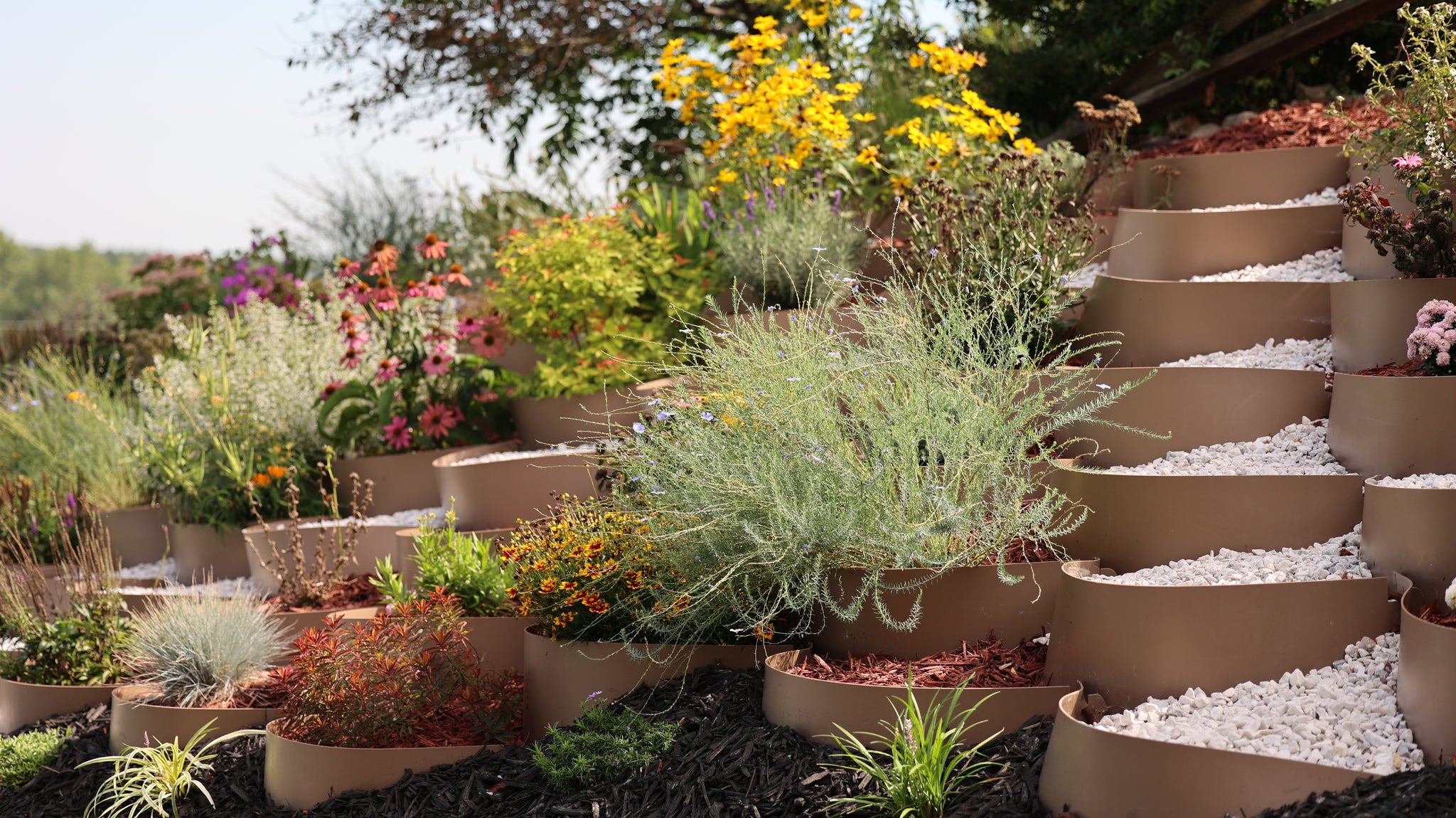Add content to this section using the sidebar.
DIY Step By Step Guide
-All orders include an emailed Dirt Locker® Installation Instructions PDF download link-

STEP 1: ALIGN J HOOKS AT TOP

STEP 2: ASSEMBLE DIRT LOCKERS
- Assemble Dirt Lockers® (matte side facing out) at the bottom of hill by inserting the cell tab into the cell slot to complete your first row.
- Connect each additional row by inserting the row tab into the center slot.
- For curved or 36°-45° slopes, follow these steps: watch how to create separate rows
CLICK TO WATCH THIS STEP!

STEP 3: ANCHOR SYSTEM
- Carry system up hill and anchor over hooks at the intersections. This might require a few people to help.
- Once in place, pull system from bottom rows to form even semi-circle cells. See step 2 if creating separate rows.
- Pro Tip! Align top row with J hooks, so there is one J hook per end and at each intersection.
CLICK TO WATCH THIS STEP!

STEP 4: J HOOKS & BACKFILL
- Fill the top row with soil halfway, sculpting each cell into a near perfect semi-circle, from left to right. Then, mallet the J hooks all the way down.
- Continue filling the top row with soil 1" from top, sculpting each cell into a "C" shape with vertical walls. NO "V" or wavy shapes! Repeat for each row, one at a time, leveling as you go left to right.
CLICK TO WATCH THIS STEP!
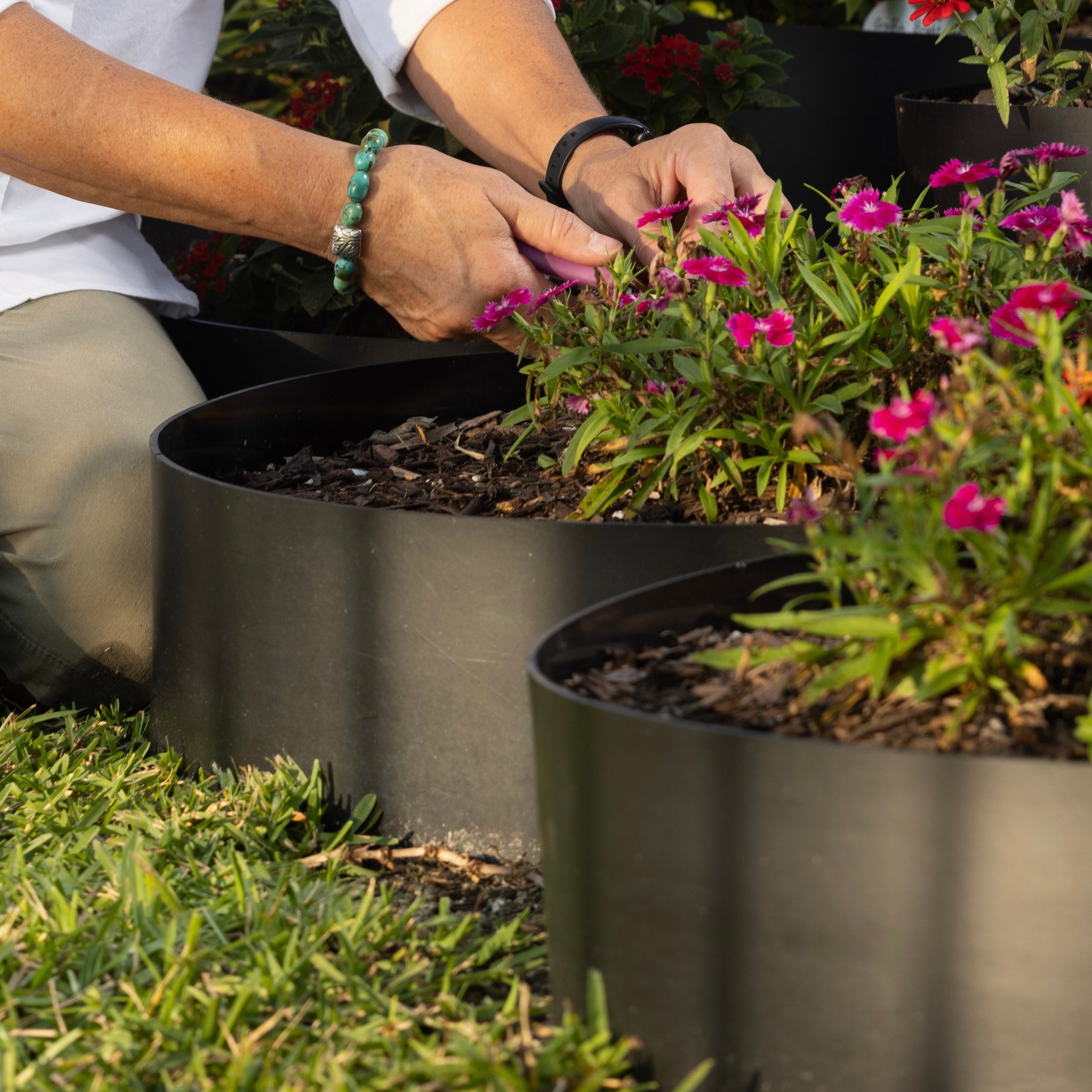
STEP 5: PLANT!
- Plant 50-70% of your system with native species for best results.
- Pro Tip! Start with smaller native plants, allowing them to acclimate. You are no longer limited to hillside plants since each Dirt Locker® creates a terraced area.
CLICK TO WATCH THIS STEP!

STEP 6: OPTIONAL
DIRT LOCKER® Configuration Guide
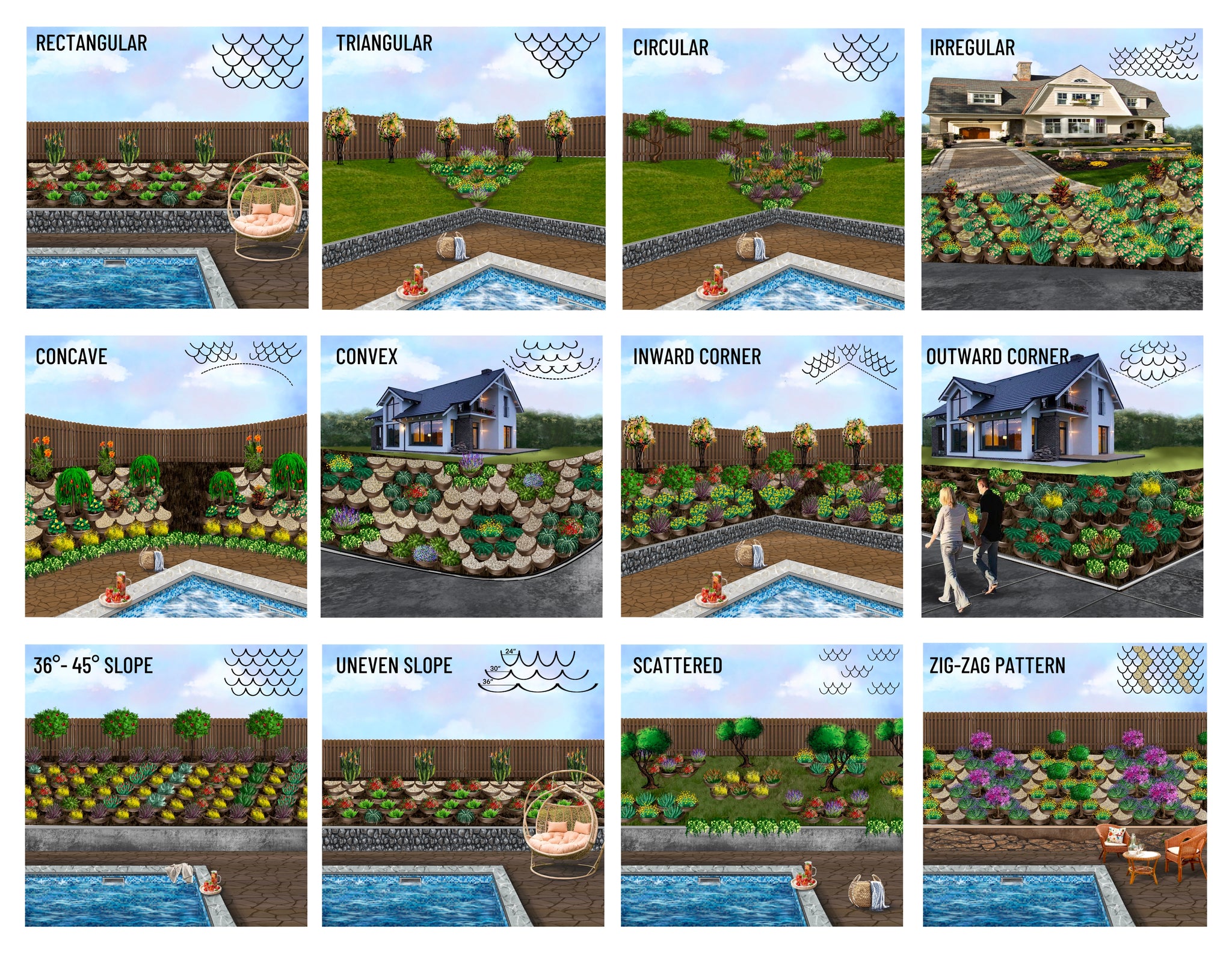
Collections
/
Shop all
Shop all
The Dirt Locker® hillside erosion control gardening geo ground grid raised terraced garden planters can stop rutting, save water, retain top soil, and grow plants with strong roots to reduce mudslides on drought wildfir... Read more
The Dirt Locker® hillside erosion control gardening geo ground grid raised terraced garden planters can stop rutting, save water, retain top soil, and grow plants with strong roots to reduce mudslides on drought wildfire affected burn areas. Upgrade your sloped yard to a beautiful garden or hillside farming landscape design.
Protect, surround and support your hillside garden by creating level rows of your favorite plants using the nurturing aid of Dirt Lockers. Terracing a hillside is an ancient farming tool that can be applied right on your sloped yard. Consider an eco friendly front yard and backyard gardening design product that prevents erosion and is pleasing to the eye.
Roots are the secret to slope stabilization and erosion control. The more you plant on your hillside terrace garden the stronger and more stable your hillside becomes. A Dirt Locker raised planter bed terrace design for steep or mild sloped yards is a landscaping solution to make better use of your backyard hill.
Everything you need to set up your DIY Dirt Locker® terrace garden.

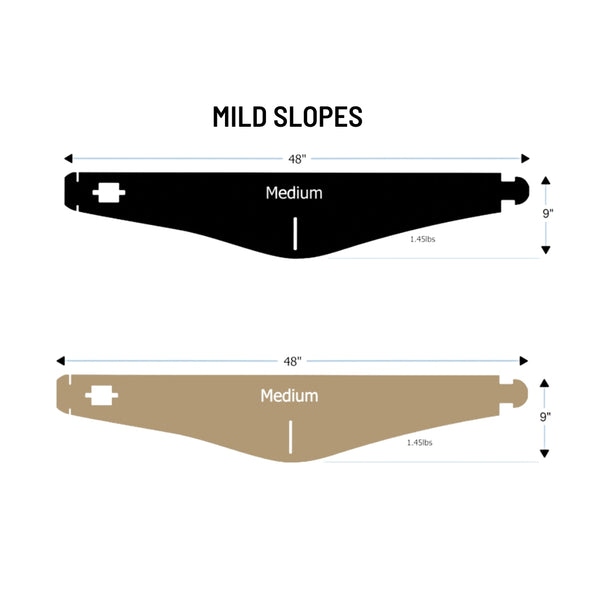
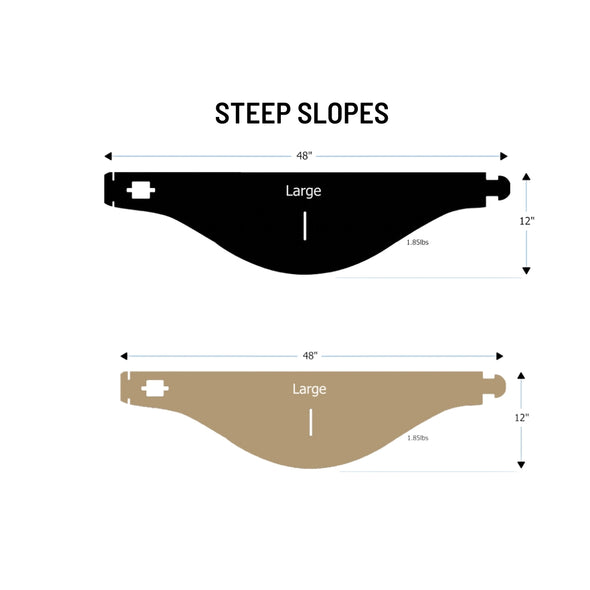
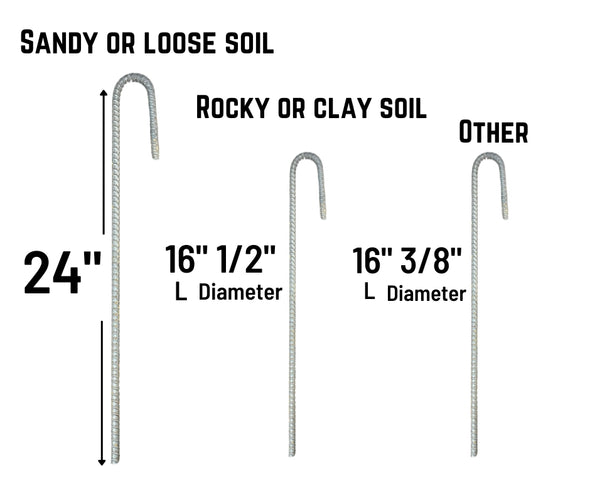



Quick links
Contact
Impact
We partner with Eden Reforestation Projects to plant 6 trees for every 10 Dirt Lockers® sold!


